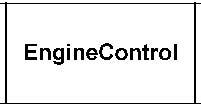*Generalizations
•
BehavioredClassifier (from BasicBehaviors , Communications ) on page 451
•
Class (from Kernel ) on page 48
(merge increment)
Description
A class may be designated as active (i.e., each of its instances having its own thread of control) or passive (i.e., each
of its instances executing within the context of some other object).
A class may also specify which signals the instances of this class handle.
Attributes
Issue 9191 - add default value
• isActive: Boolean Determines whether an object specified by this class is active or not. If true, then the owning class
is referred to as an active class. If false, then such a class is referred to as a passive class. Default value is false.
Associations
Issue 8303 - add explicit multiplcities to properties
• ownedReception : Reception [0..*] Reception s that objects of this class are willing to accept. (Subsets Namespace ::ownedMember
and Classifier::feature.)
Issue 8313 - add constraints subsection, copy constraint from Reception and add OCL
Constraints
[1] A passive class cannot have receptions.
(not self.isActive) implies self.ownedReception ->isEmpty()
Semantics
An active object is an object that, as a direct consequence of its creation, commences to execute its classifier behavior,
and does not cease until either the complete behavior is executed or the object is terminated by some external object. (This
is sometimes referred to as the object having its own thread of control.) The points at which an active object responds to
communications from other objects is determined solely by the behavior of the active object and not by the invoking object.
If the classifier behavior of an active object completes, the object is terminated.
Notation
See presentation options below.
Presentation options
A class with the property isActive = true can be shown by a class box with an additional vertical bar on either side, as
depicted in Figure 13.14.

Figure 13.14 - Active class
Issue 8894 -replace most of the old definition of Duration